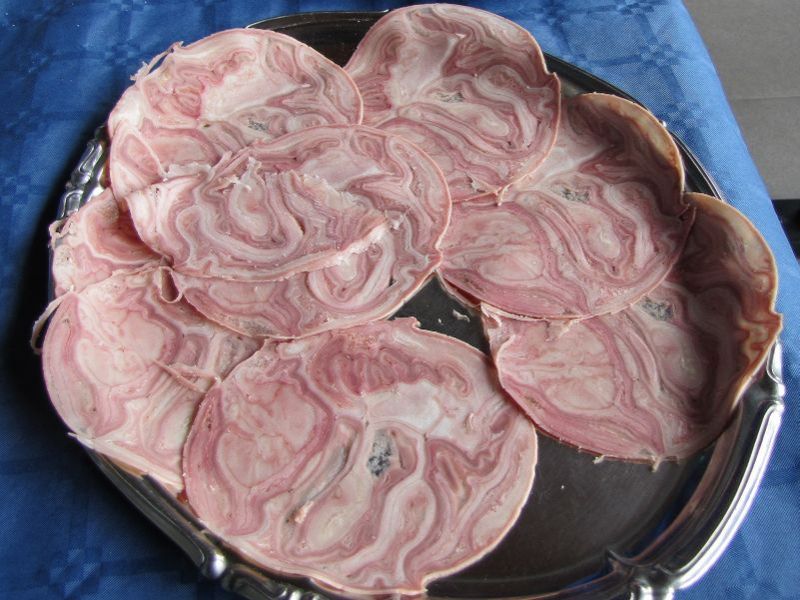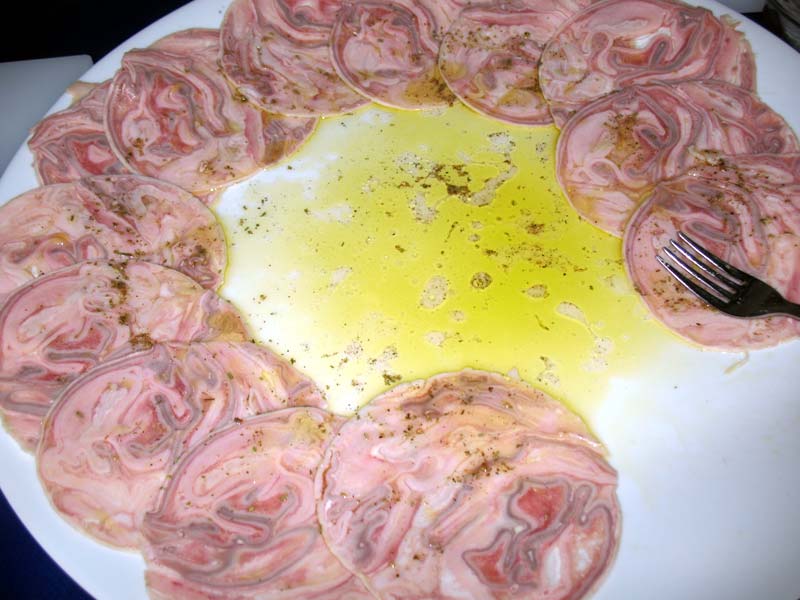Aree protette del Po Piemontese
www.parcopopiemontese.itTripa d'Muncalé (or Moncalieri Tripe, or Salami Tripe)
Definition
Despite the name, it is a "salami" produced with parts of cow, sheep, goat, and pig's stomach. Tripa 'd Muncalé probably comes from the usages of Cisalpine Gaul, where they used to sack the stomach of various animals creating the so-called "tripe sausages".
In Moncalieri, during the Middle Ages, the processing methods transformed the "tripe sausage" into a sort of "salami sausage" (another term often used to call tripa 'd Muncalé).
Tripa 'd Muncalè has a rosy color and is sliced, often dressed with oil and spices.
- Processing Method: Tripe (parts of stomach) is collected from the various butchering facilities of the town of Turin and the surroundings. It is cleaned, washed, and whitened. It is cooked in salted water for eight hours and then, when it is still hot, pressed in molds and left cooling. The product is then cut and consumed.
- How to use it: Tripa 'd Muncalé is served cold, sliced or cut into smal cubes, and often seasoned with olive oil and spices. It is also possible to bread thick Tripe slices, to combine it with or to substitute it for the raw beef tripe, so that it can enhance your dishes' taste by loosing less liquids that have already evaporated during the previous processing stage.
- Production Area: The Municipality of Moncalieri.
- Legislative Protection: Tripa d'Muncalè is classified among the "Traditional Agri-foodstuffs of Regione Piemonte", according to art. 8 of the Legislative Decree 30th April 1998, n. 173 and the Annex to the Decisions of the Regional Council 15th April 2002 n. 46-5823.
The Producers
© 2024 - Ente di gestione delle Aree Protette del Po piemontese - p. iva 06398410016









